Peugeot Expert, which has produced more than 195,000 units since its launch in 2016, is building on its commercial success with a new offering in the compact van segment – a 100% electric version.
It should become an indispensable working tool for many different professions, making everyday life easier with the latest technology. Its advantages include the ability to enter urban centres where environmental restrictions apply, free parking or other privileges that electric vehicles can enjoy. The Peugeot e-Expert has all the features of the classic Expert, plus zero emissions. So let’s take a look at how electromobility works in practice for vans…

The exterior of the e-Expert is completely identical to the combustion versions, and even the tank cap (non-functional, of course) is present. The only identifying feature is the charging door on the left driver’s side front. And hence the still green markings if you ask for them. Otherwise, it’s a classic design without any frills.
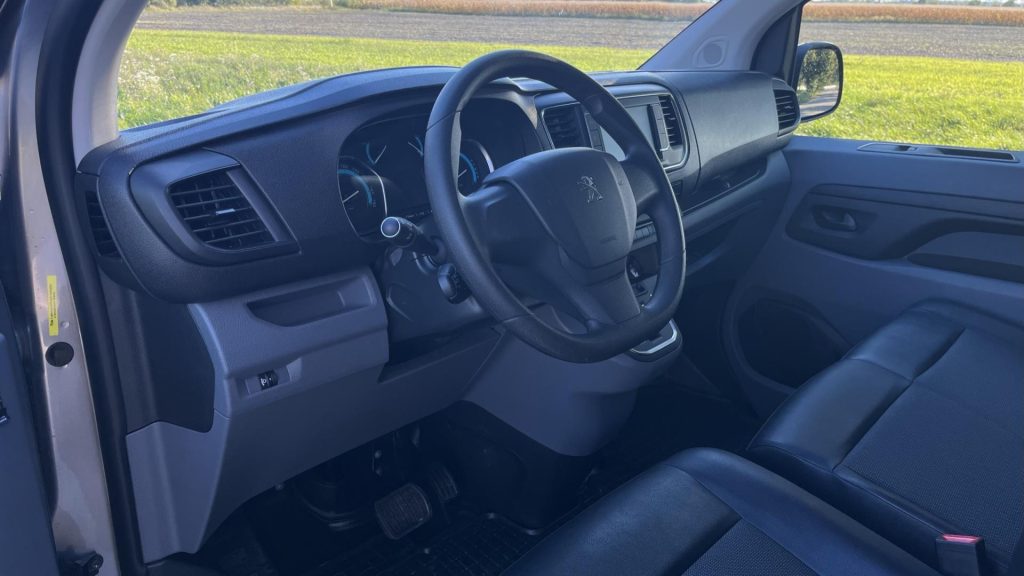
The interior of the e-Expert is close to a regular passenger car, so you don’t feel like you’re sitting in a van when you get in. That is, except for the higher seating position, which I have minor reservations about. The driver’s seat cannot logically be moved too far back, and thus I couldn’t quite find the ideal position behind the wheel.
I don’t really understand the inside rear-view mirror in the case of the Furgon version, as it’s completely unnecessary here. The smaller rear view mirrors somewhat offset the rear parking sensors but could really use an extra camera here, as you have a big dead space in the back in a sheetmetal van.
There were also no optional xenon lights in the test vehicle, or some basic LEDs instead. This also doesn’t work for me on the electrified version, as the conventional halogen has a higher consumption than the LED lights would have. And consumption is the first concern here. Not to mention light output at night…

After booting with the classic key and beep, we’re good to go. Always and again in Normal mode and so Brake mode, with higher recuperation you always have to activate. Pressing the brake pedal you almost always also use the conventional brakes, but with the Brake mode the brake pads are saved and it is possible to ride this way practically without braking with the right foot.
The only problem I see is that the brake lights don’t come on when recuperating, which slows the car down quite significantly. More than once I’ve had a driver notice that I was slowing down significantly only at the last minute, and in fact had no way of knowing.

Infotainment is only with basic functions and for example, the history of power consumption or charging power progress you will not find here. I’d certainly begrudge the built-in navigation and accept slightly better quality speakers. The small display also doesn’t overflow with speed very much, but in delivery it’s not essential. Fortunately, there’s support for both Android Auto and Apple CarPlay. It’s disappointing, however, that there’s not a single handy place to put your phone, as all the cubbies and shelves are sort of shallow and especially without a non-slip surface.
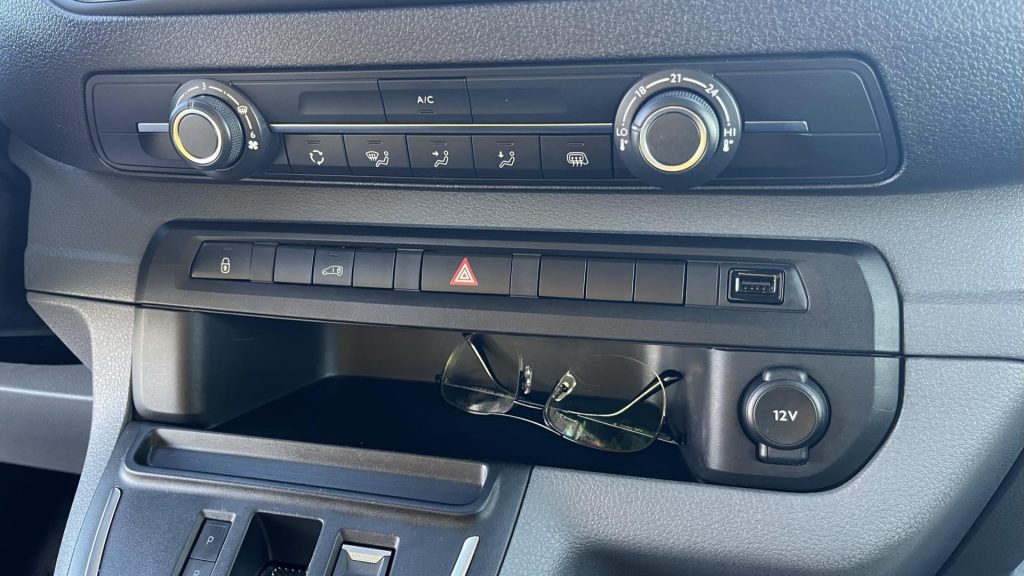
The Peugeot e-Expert is offered with three body lengths, two of which can be ordered in our market, and also comes with the option to choose between two batteries. The smaller one has a capacity of 50 kWh and provides a range of 230 kilometres and the larger one, which was also in the test vehicle, has up to 75 kWh with a logically higher range, which in the urban cycle should be up to 330 kilometres.

Despite the use of batteries, the e-Expert is a really usable vehicle, with a load capacity of up to 6100 litres, providing space for three standard Euro pallets in a row if necessary. The batteries are hidden under the floor and therefore do not restrict the space for the goods being transported.
If you’d like to haul items more than four metres long, there’s an opening in the cab bulkhead near the floor with a lockable door through which pipes or other longer items can be rolled up to the passengers’ feet. In terms of practicality, the e-Expert is a very decent competitor to any other van with conventional drive. Only the payload (without driver) of 835 kg is specific to electric motors.

The cargo area floor on the test car is steel only, and I really recommend paying the extra €540 for a wood one, or at least €420 for particleboard. Because after a few thousand miles, the sheet metal floor already had a lot of scratches on it, and I can’t imagine moving a pallet, for example, daily, entering here with pebbles on my shoes and the like.
The lighting in the cargo hold is very poor, as the two small incandescent lights are really dim. I will repeat myself but, as with the lights, I would have expected LED lighting already, preferably also on the sides and in the middle part of the ceiling.
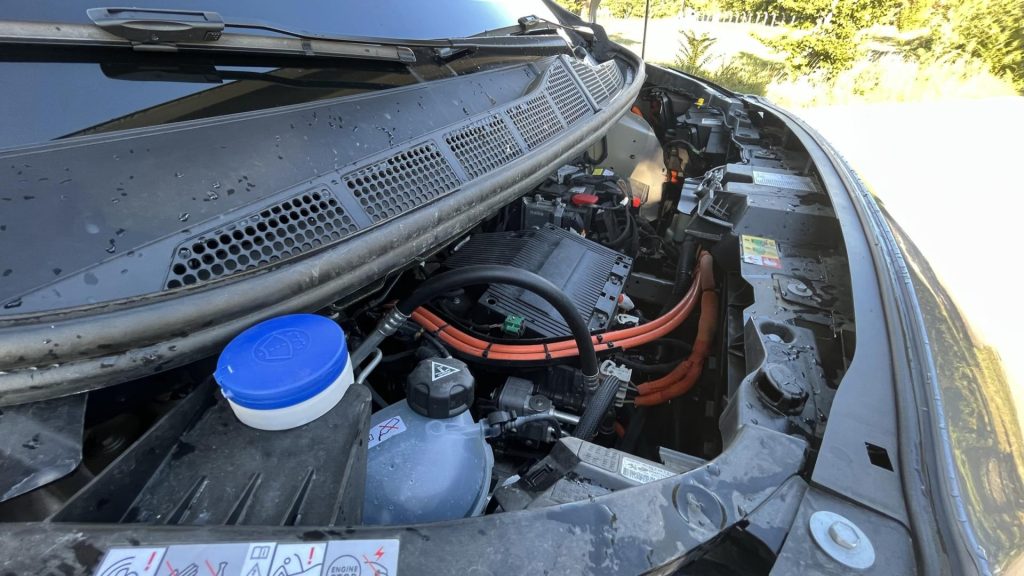
The performance specs of the electric utility probably won’t surprise you too much, as they’re pretty much identical to the French brand’s passenger EVs. The Peugeot e-Expert comes with a single 100 kW electric motor and 260 newton metres of torque. The larger versions of the e-Expert can accelerate to 100 km/h in under 12 seconds, but it is the top speed, which is 130 km/h for this model, that will be key for customers.
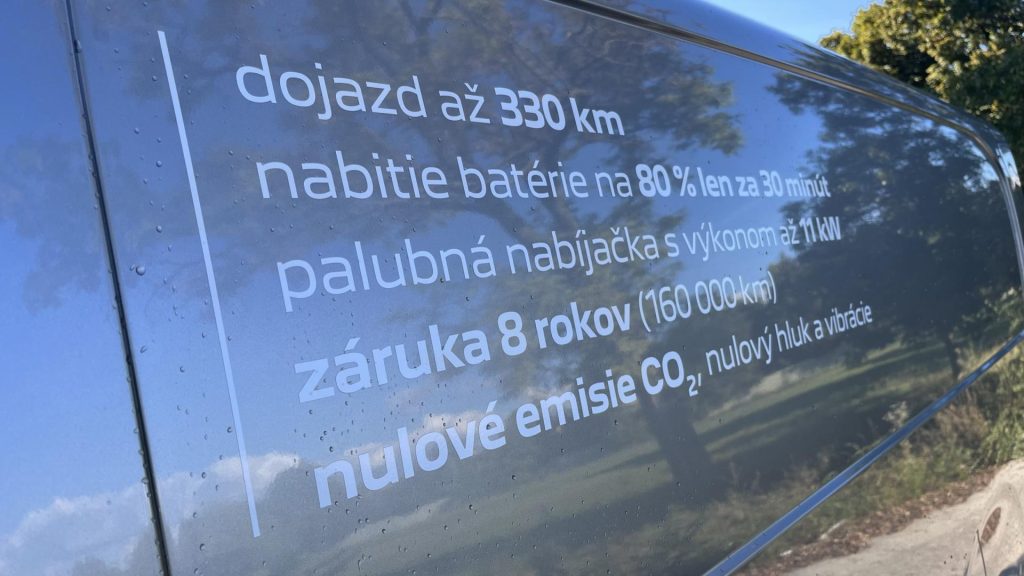
With moderate urban driving, the e-Expert can actually drive with an average electricity consumption of around 18-20 kWh/100 km. If one could drive like this all the time, the range would realistically sit with the paper figures, possibly even go higher. But theory is one thing, and reality, where more frequent acceleration and use of the engine’s potential is needed, pushes the range rather below 300 kilometres.
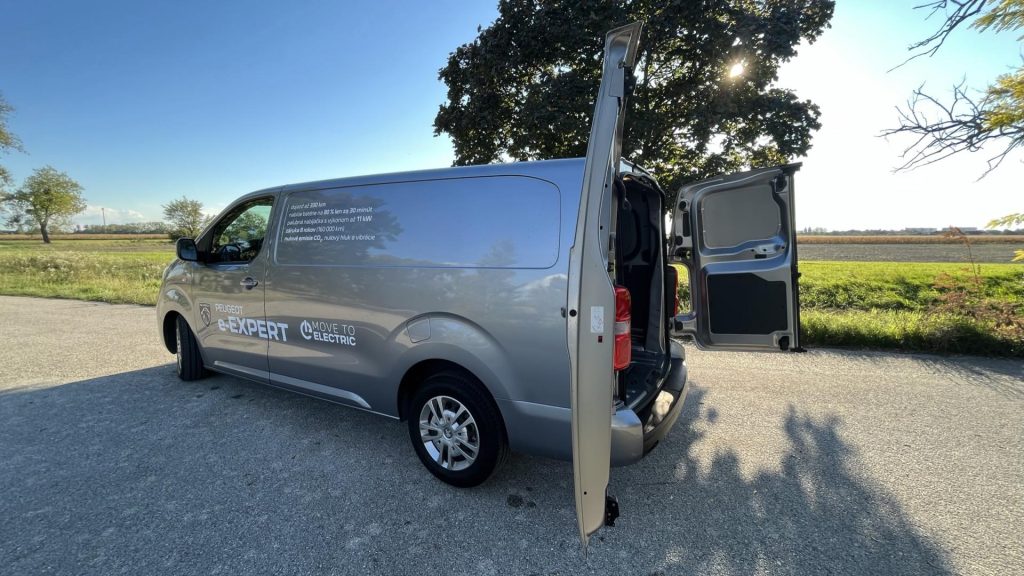
However, at district and motorway speeds, which may not even be close to the maximum speed limit, the consumption gets quietly above 30 kWh/100 km, which in practice means that a longer journey with goods has to be planned very well. There’s no mistaking the frontal area and aerodynamic drag of the van, and the higher kerb weight, whether of the vehicle itself or the battery, also plays a big part here.
Peugeot e-Expert can charge batteries at up to 100 kW, and can push batteries from zero to 80% on a powerful charger in around 30 minutes. Charging in company premises at three-phase current will also be realistic to a full charge in approx. 8 hours. There is probably no point charging the vehicle from a conventional 230V socket, as you will get from 0% to 100% in more than 36 hours. It only makes real sense if you need to recharge the battery overnight for a longer journey in the morning.

The base price of the car in our specification is €45,264 including VAT and on sale, with the shorter version with the smaller battery costing approx. 7000€ less. At current diesel prices, the difference to a similarly powerful and equipped diesel version would be recovered after approx. 50000 kilometres. A classic 100km in urban conditions will cost you approx €2 at current electricity prices, a consumption you have no chance of achieving on a combustion van. That’s something to consider, but don’t forget that the motorway is forbidden territory and electricity prices are a fortune teller at the moment…




